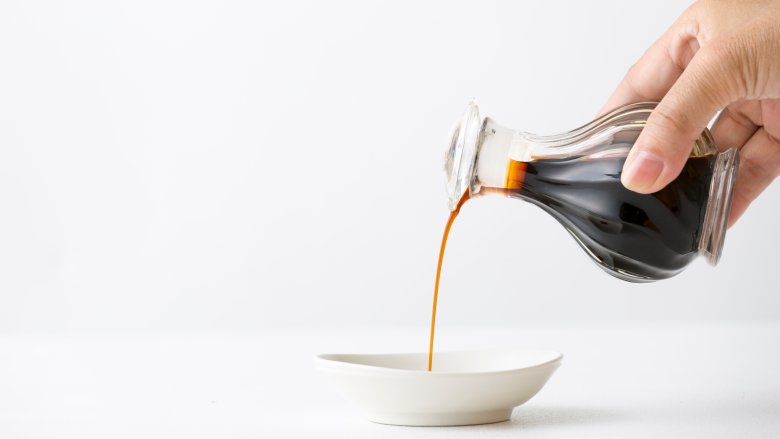What Is Umami Flavor Really?
Everybody knows, and can easily recognize, four basic taste groups: sweet, salty, sour, and bitter. But what about that mysterious fifth flavor profile, the one known as umami? What does that mean, and how does it taste? For starters, the concept of "umami" isn't really a new one. According to The Spruce Eats, umami is a Japanese word meaning "pleasant savory taste," and the first person to classify and describe this taste was a Japanese chemist (and foodie) named Kikunae Ikeda back in the 19th century (via Food Republic). According to Ikeda, umami taste comes from an amino acid called L-glutamate, a molecule produced when certain foods (like cheese) begin to age and others (meat) are heated by cooking.
So why are we so fond of umami flavors, whether we recognize them or not? It turns out the human predisposition towards this flavor dates back to infancy, or even further, as high levels of amino acids are found in both breast milk and amniotic fluid (that stuff we're all swimming in before we're so rudely evicted from the womb). So yeah, we tend to develop a taste for umami pretty early on.
What foods have umami flavor?
Meat, at least in its cooked state, is one of the umami-est of foodstuffs. Pork, chicken, and seafood have decently high levels of the glutamates that lend meat its umami taste, but beef has even higher glutamate levels, thus it is even umami-er. In fact, chef Mareya Ibrahim, quoted in Reader's Digest, calls burgers "the ultimate umami dish."
Cheese develops more umami flavor the longer it ages, and one of the best cheeses for adding umami to many dishes is a nice ripe Italian Parmesan. Certain vegetables, too, are also a good source of umami: tomatoes, potatoes, carrots, asparagus, and particularly mushrooms, which is why this last-named delight is often substituted for meat in vegetarian dishes. Another frequent meat stand-in, tree nuts, are also a great source of umami flavor as well as protein.
Adding extra umami flavoring with seasonings
Should you wish to add a little extra umami while you're cooking, soy sauce is one of your best bets. Not only are all soy products rich in umami flavor, but fermenting the soybeans increases the glutamate content even more. Other umami condiments recommended by the chefs at Seasoned Advice include Worcestershire sauce, fish sauce, miso paste, and Marmite or Vegemite (with these last two, it's best to know what you're getting into ahead of time, since they're definitely an acquired taste for anyone who does not come from the land Down Under). And of course, there's always MSG, which the USDA has assured us is a basically safe ingredient despite the bad rap it sometimes gets for causing the (largely unsubstantiated) "Chinese restaurant syndrome".
However you get your umami on, it's all good. After all, umami and you have been BFFs since before you were even born.


